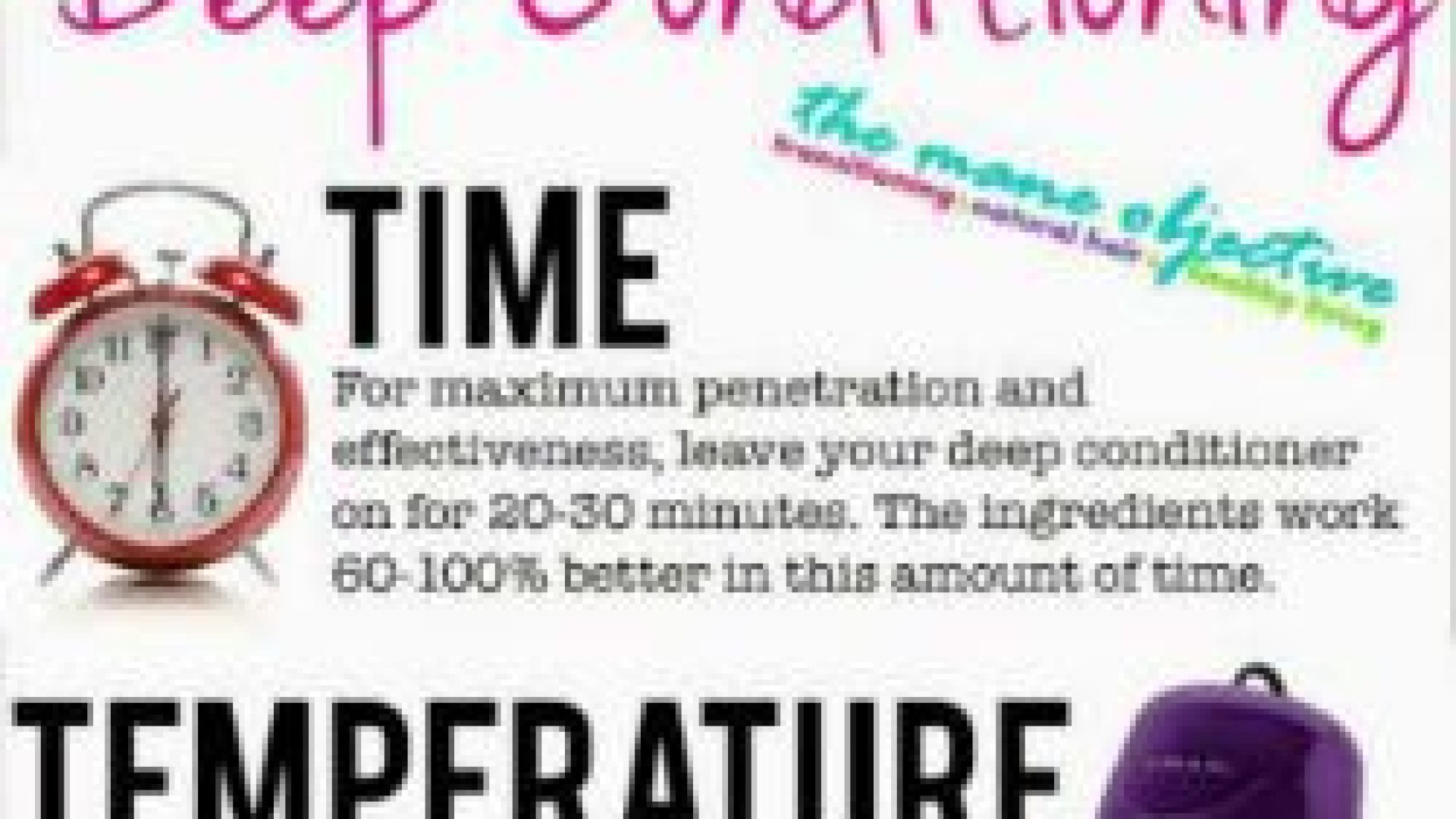
Although deep conditioning is an intense treat for your hair, it doesn’t have to be an intense process at all. There’s an over-abundance of information online that makes deep conditioning seem like rocket science, but it is really simple. Actually, getting the most out of your deep conditioner is really simple.
It boils down to what I like to call the 3 T’s: time, temperature, and type.
Time
One of the hallmarks that sets deep conditioning apart from regular rinse-out conditioning (which you should totally be doing on those co-wash days between deep conditioning sessions”> is the amount of time the product spends on the hair. If you read the label of most deep conditioners designed for natural hair, they recommend allowing the product to sit on the strands for 15-30 minutes. Even though some of my favorites that aren’t specifically for textured hair (like Eva NYC Therapy Session”> recommend 3-5 minutes, I still leave them on for 20-30 minutes. Why? Because leaving the conditioner on for 20-30 minutes allows the ingredients to reach maximum adsorption. What this means is that although some ingredients (like proteins”> stick to the hair immediately, with more time, they are able to patch, cover, and stick to more damaged areas than they would if only 3-5 minutes were given. In this article by Jc of The Natural Haven, she shares that deep conditioning ingredients are able to reach maximum adsorption (sticking to/externally repairing”> after 20-30 minutes — 60 – 100% more than they achieve in the standard 3-5 minute time frame. It is important to note that no further adsorption occurs after 30 minutes. So no, you don’t need to deep condition overnight.
- The Takeaway: Leave your deep conditioner on for at least 20 minutes for maximum effectiveness. 30 minutes, if you have color-treated or otherwise damaged hair.
Temperature
Do you have to heat up your deep conditioner for it to be more effective? No, you don’t have to do anything you don’t want to do. But is it more effective? The short answer is, yes. In that same article by Jc linked above, she discusses the impact of temperature on the hair when deep conditioning. But just in case you don’t feel like reading all of that, let me summarize it for you: heat does help lift the hair cuticle, and allow for deeper penetration of ingredients. Heat also facilitates increased adsorption of ingredients to the hair. Heat around 35 degrees Celsius (95 degrees Fahrenheit”> so as to not burn the skin or scalp is found to be most effective. You can achieve this by placing your conditioner in a hot water bath, sitting under a hooded dryer (or hooded attachment”>, or using something like a Hot Head. Just remember to not leave it on for more than 30 minutes.
- The Takeaway: Your deep conditioner + indirect heat = maximum effectiveness.
Type
Now that we’ve got the super science out of the way, it’s time to talk about my favorite part: products. The result you desire to achieve with your deep conditioning session will largely depend on the products you choose. Almost all deep conditioners will have a base that consists of water and fatty alcohols (like cetyl, stearyl, and cetearyl”>. What comes after that will determine how a particular deep conditioner will work for you. But in general, you can follow these guidelines to decipher which deep conditioner to pick up:
Mega Moisture
Look for oils, butters, and humectants (glycerin, panthenol, honey, agave, propylene glycol”> in the first 5-7 ingredients after water. These ingredients will soften and moisturize the hair, along with the fatty alcohols.Protein Power
If your hair is weak or limp from damage or abuse, a dose of hydrolyzed proteins will whip your hair right into shape. Within the top 10 ingredients (because protein formulations and strengths can vary wildly”>, check for hydrolyzed proteins (such as vegetable, quinoa, soy, rice, and keratin”>, and a personal favorite of mine, keravis (aka Hydrolyzed Vegetable Protein PG-Propyl Silanetriol”> to give your hair a strengthening boost.The Balancing Act
If you’re looking for elasticity, moisture-protein balance, and pH balancing, your conditioner will likely have a top 10 blend of moisture and protein properties like the ones listed above. In addition, they will also likely contain omega and ceramide rich oils like avocado, wheat germ, sunflower, safflower, flax seed, and hemp. You can also count on a dose of amino acids (like glycine, alanine, proline, arganine, lycine, and glutamic acid”>. These aminos tend to be toward the bottom of the ingredient list — and I need to do more research about why. It could be formulation-based, or just pixie dust. I’ll report back and update here when I get a more scientifically solid answer.- The Takeaway: Go beyond what the product says it’ll do. Marketing and gimmicks are real. Turn to the ingredient list — it will give you far more insight into what the deep conditioner can do for your hair.
I wouldn’t be me if I didn’t end this off with a few product recommendations. If you’re looking for:
Mega Moisture: TGIN Honey Miracle Mask, Shea Moisture Manuka Honeu & Mafura Oil Intensive Hydration Hair Masque, Eden BodyWorks Jojoba Monoi Deep Conditioner, Amika Nourishing Mask
Protein Power: ApHogee Keratin 2 Minute Reconstructor
Balancing: Shea Moisture JBCO Treatment Masque, Zotos 180 Pro Rapid Restorer, Hydratherma Naturals Amino Plus Protein Deep Conditioning Treatment, Eva NYC Therapy Session Hair Mask, ApHogee Texture Treatment, Ouidad Curl Recovery Melt-Down Extreme Repair Mask
[prodmod]